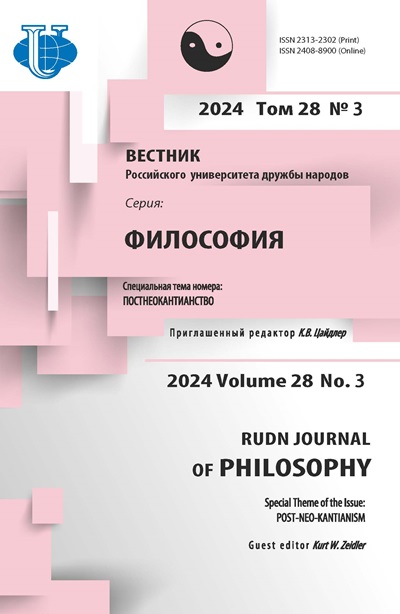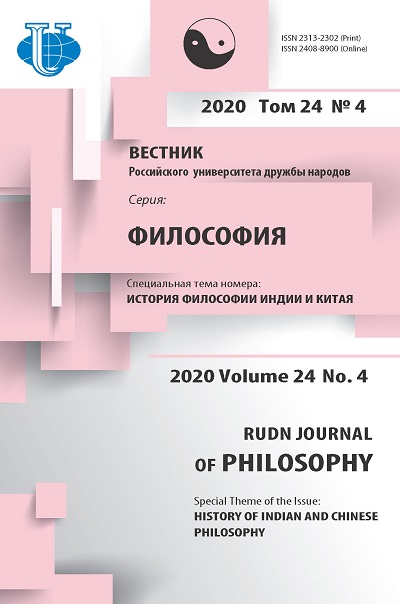Концепция времени в советском неоклассицизме (на примере архитектурного дискурса)
- Авторы: Круглова Т.А.1
-
Учреждения:
- Уральский федеральный университет имени первого президента России Б.Н. Ельцина
- Выпуск: Том 24, № 4 (2020): ИСТОРИЯ ФИЛОСОФИИ ИНДИИ И КИТАЯ
- Страницы: 681-693
- Раздел: ОНТОЛОГИЯ И ГНОСЕОЛОГИЯ
- URL: https://journals.rudn.ru/philosophy/article/view/25014
- DOI: https://doi.org/10.22363/2313-2302-2020-24-4-681-693
Цитировать
Полный текст
Аннотация
В статье рассматривается процесс смены темпоральных режимов в советской культуре на рубеже 1920-х - и в течение 1930-х гг. на материале архитектуры. Сравниваются концепции времени в конструктивизме и неоклассицизме, так как борьба между ними определила основные векторы художественного развития в реконструктивный период. Проводится анализ дискурса официальной позиции по отношению к основным трендам развития архитектуры в контексте периодизации социалистического строительства, выявляются основания поддержки обращения к классическому наследию. Смена государственно-политических задач (переход от демонтажа старого порядка и ликвидации последствий распада социальной ткани к построению нового социального порядка) задала новые требования к архитектуре как важнейшему способу социальной репрезентации. Новое общество - социализм - трактовалось в конструктивизме, ведущем направлении архитектуры 1920-х гг., в модусе будущего времени. В неоклассицизме 1930-х гг. социализм помещался в модус настоящего времени. Конструктивизм был нацелен на прагматику восстановления социальной ткани и решение текущих задач (массовое жилищное строительство, новая социальная инфраструктура), а также на конструирование будущего социума и человека. В конце первой пятилетки властью перед культурой в целом и перед архитектурой в частности были поставлены другие цели: репрезентация достижений и выражение величия социалистического строительства. Неоклассицизм был призван для увековечивания настоящего положения дел в модусе реального совершенства и превосходства советского социализма над любыми иными форматами социальной жизни. Между временем творения (конструктивизм) и временем свершения (неоклассицизм) образуется пробел, разрыв, который должен быть скрыт. Способом сокрытия темпорального разрыва становятся классические принципы формообразования и образцы ренессансного и русского классицизма, призванные убедительно продемонстрировать, с одной стороны, возможность ускорения и сжатия времени, стремительность достижения идеала, а с другой стороны, обесценить новации, сделать ненужным представление о движении времени в будущее. Учение ведущего неоклассика И. Жолтовского разбирается с точки зрения альтернативы утопической трактовке времени в конструктивизме, как реализующее мифологическое время, в котором исток и финал творения даны одновременно и в модусе вечности.
Об авторах
Татьяна Анатольевна Круглова
Уральский федеральный университет имени первого президента России Б.Н. Ельцина
Автор, ответственный за переписку.
Email: tkruglowa@mail.ru
доктор философских наук, профессор кафедры истории философии, философской антропологии, эстетики и теории культуры
Российская Федерация, 620002, Екатеринбург, ул. Мира, 19Список литературы
- Вяземцева А.Г. Искусство тоталитарной Италии. М., 2018.
- Тренчени Б. Бунт против истории: «Консервативная революция» и поиски национальной идентичности в межвоенной Восточной и Центральной Европе // Антропология революции : сб. статей. М., 2009. С. 207-241.
- Круглова Т.А. «Красная» реставрация // Круглова Т.А. Нескромное обаяние соцреализма, или Советская художественность. Екатеринбург, 2005. С. 262-298.
- Колли Н.Я. Задачи советской архитектуры: доклад на Первом всесоюзном съезде советских архитекторов. М., 1937.
- Звагельская В.Е. Неоклассицизм советской эпохи в памятниках архитектуры Свердловской области. Екатеринбург, 2011.
- Хан-Магомедов С. Архитектура Москвы от авангарда до сталинского ампира // Москва - Берлин. 1900-1950. Москва, Берлин, Мюнхен, 1996. C. 205-211.
- Тепляков Д.А. Концепция социалистического общества в «Красной звезде» Александра Богданова // Эпоха социалистической реконструкции: идеи, мифы и программы социальных преобразований : сб. науч. трудов. Гл. редактор Л.Н. Мазур; М-во образования и науки Рос. Федерации, Урал. федер. ун-т. Екатеринбург: изд-во Урал.ун-та, 2017. С. 71-78.
- Иконников А. Утопическое сознание и архитектура ХХ века // Картины мира в искусстве ХХ века. Штрихи к портрету эпохи. М., 1994. С. 56-75.
- Ревзин Г. Архитектурная теория Жолтовского // Искусство. 1988. № 10. C. 60-64.
- Манхейм К. Идеология и утопия // К. Манхейм. Диагноз нашего времени / Пер. М.И. Левина. М. 1994. С. 7-275.
- Садовский Я. Сталинизм как следствие гибели утопий // Эпоха социалистической реконструкции: идеи, мифы и программы социальных преобразований : сб. науч. трудов. Екатеринбург. 2017. C. 389-399.
















